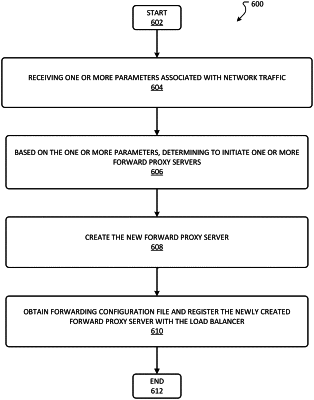| CPC H04L 63/0281 (2013.01) [H04L 67/563 (2022.05)] | 20 Claims |

|
1. A computing system for a third-party gateway for security and privacy comprising:
at least one processing unit; and
a memory storing instructions that are executed by the at least one processing unit to perform the method comprising:
providing a layer four load balancer that performs traffic processing at a layer seven level;
providing a plurality of forward proxy servers;
providing a management backend that provides a configuration implementation to the plurality of forward proxy servers, the configuration implementation specifying one or more processing parameters for each of the forward proxy servers, wherein each forward proxy server of the plurality of forward proxy servers performs layer seven network traffic processing on network traffic received from the layer four load balancer in accordance with the one or more processing parameters, the network traffic being directed to a third-party host residing external to a virtual private datacenter in which the computing system for the third-party gateway for security and privacy resides;
creating a new forward proxy server in response to an amount of traffic received from one or more microservices associated with an application service;
providing a configuration implementation to the newly created forward proxy server;
registering the newly created forward proxy server with the layer four load balancer; and
suspend or discard the newly created forward proxy server when the amount of traffic received from the one or more microservices associated with the application service decreases.
|